Environmental pollutants and pathogens can have negative impacts on wildlife health and population dynamics. While their effects are often sub-lethal or weak individually, little is known about their cumulative and interactive effects when experienced together. The objective of EcoDIS is to address this issue via an interdisciplinary approach that combines demographic monitoring, ecotoxicology, population genetics, epidemiology, and movement ecology to study how levels of pollutants (TE & plastics) and parasites in the Yellow-legged Gull (Larus michahellis) alter their reproductive success, population dynamics and movement patterns, and subsequently modify the circulation of infectious agents at different spatial scales. By using a widespread wildlife species frequently found in urban areas, results are of both significant fundamental (i.e., effects of environmental stressors on wildlife population dynamics) and applied interest (i.e., pathogen circulation by wildlife and human exposure risk)..
Funded by : ANR PRC CE34.
CURRENT LAB MEMBERS

Space use by Yellow-legged gulls.

Molecular analyses of parasites and pathogens.

Pathogen diversity in Ornithodoros maritimus exploiting Yellow-legged gulls
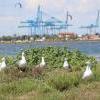
Combined effect of plastics and parasites on seabird demography and movement.
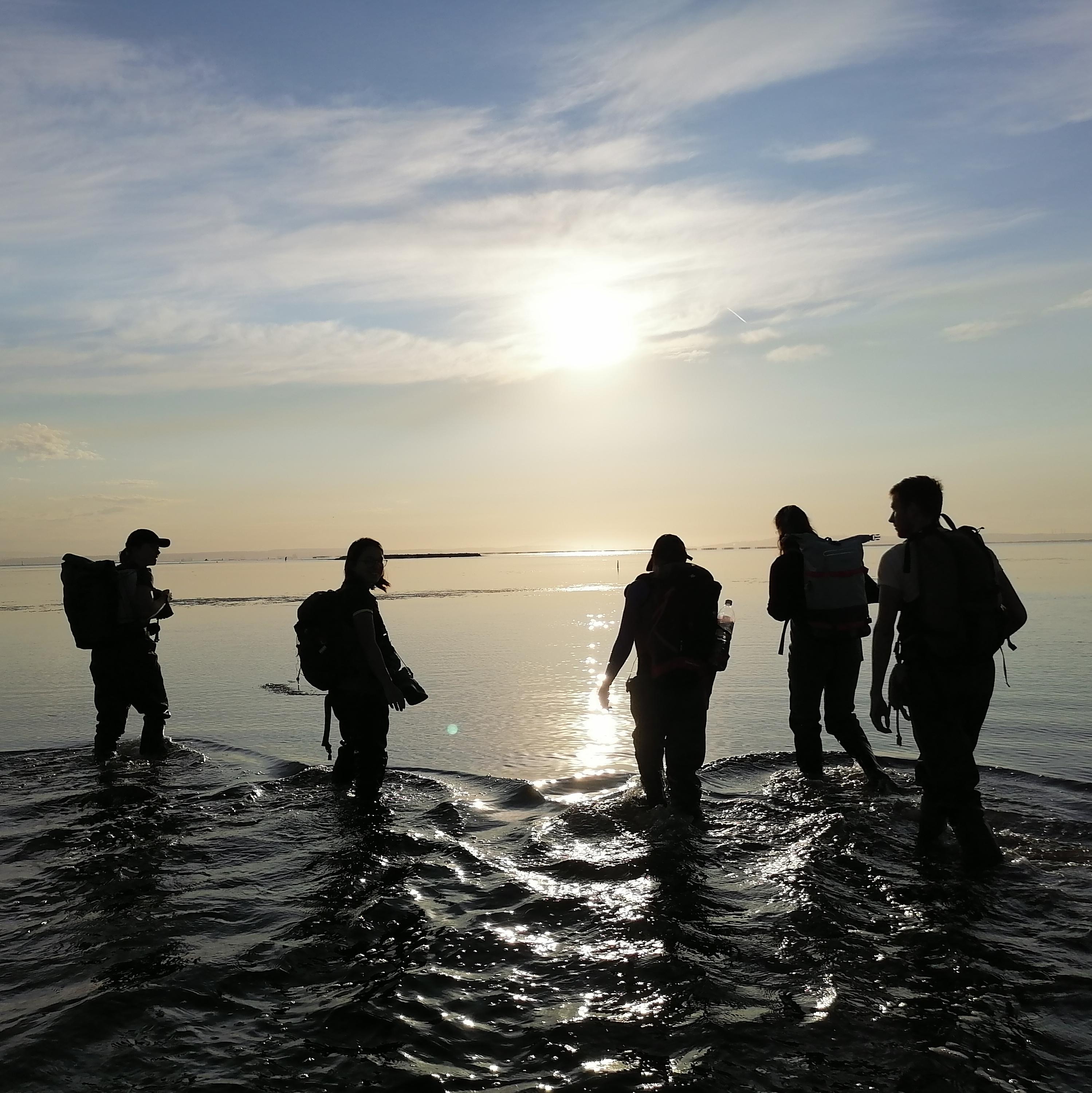
Management of field-based activites in the framework of the EcoDIS project.
PAST LAB MEMBERS
CURRENT PROJECTS
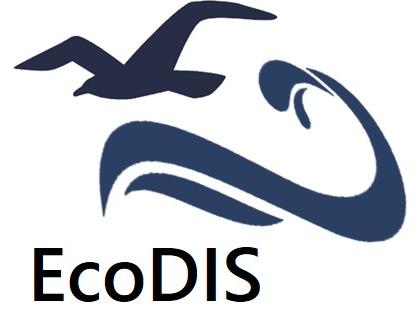
learn more ...
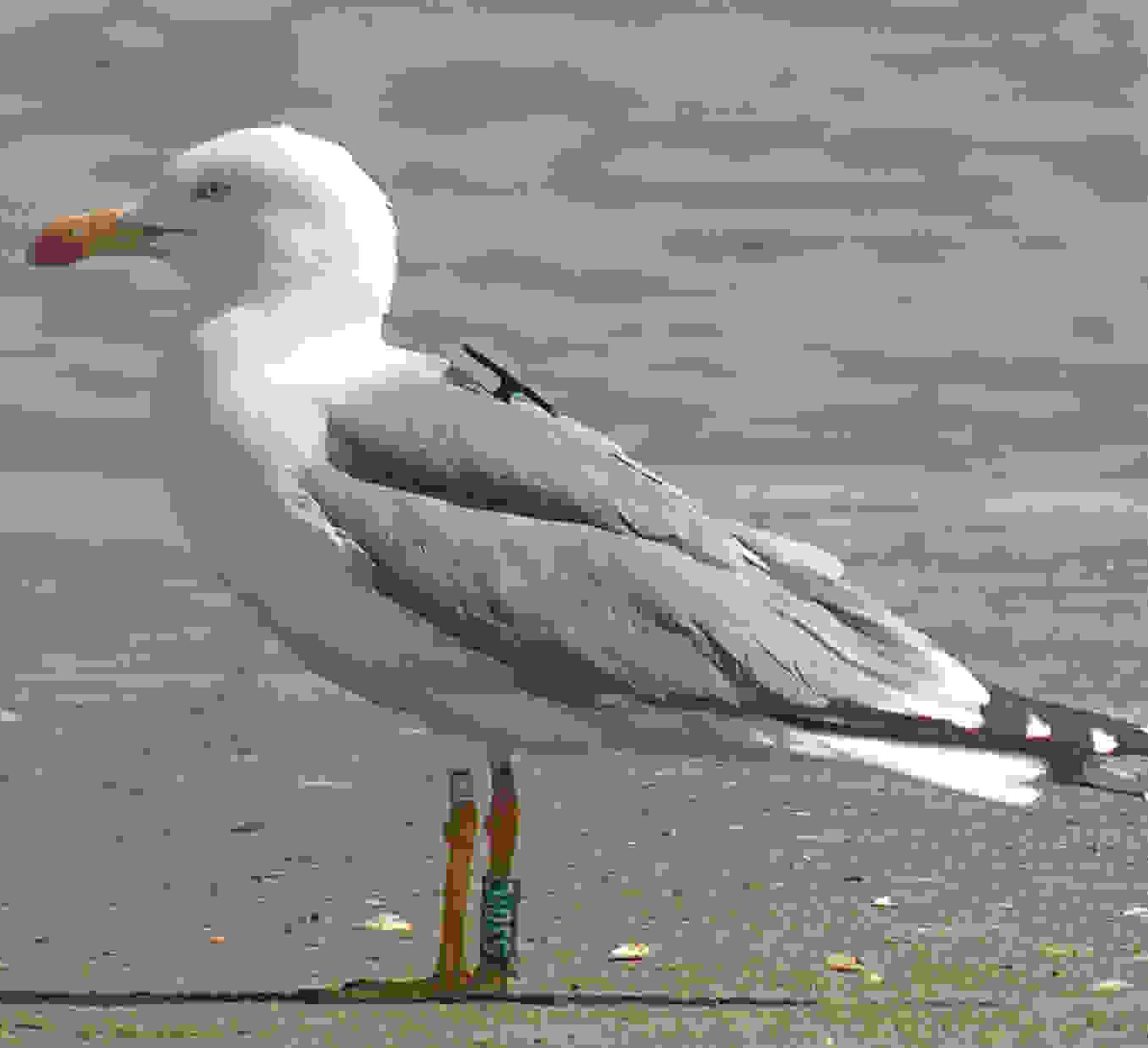
learn more ...
This project aims to understand how space use in an abundant seabird species, the yellow-legged gull (Larus michahellis), can be linked to global health. Yellow-legged gull colonies are found throughout the Mediterranean, but to date, we know surprisingly little about their movements at different spatial and temporal scales. These birds have readily adapted to human-modified landscapes and are frequently present in urbanized areas. During foraging, they can be heavily exposed to pollutants such as plastics – both through direct consumption and via bio-magnification. This may affect their overall health and survival, their resistance to other environmental stresses (such as infectious disease) and their ability to reproduce. Waste from these birds (pellets and feces) can also be spread at different spatial scales – disseminating pollutants and infectious agents and impacting other local species, including humans. This project combines biotracking data and plastic hydrodynamic mapping with molecular, physiological and chemical analyses to examine these interactions in order to evaluate the contribution of one component species in the functioning of the Mediterranean ecosystem.
Funded by: Ecologie de la santé - AAP 2020 Mission pour les initiatives transverses et interdisciplinaires (MITI), CNRS
Collaborators: Claude Estournel (LEGOS, Toulouse), Wolfgang Ludwig (CEFREM, Perpignon), Rémi Choquet (CEFE, Montpellier), Alexandra ter Halle (IMRCP, Toulouse), Marion Vittecoq (Tour du Valat), Thomas Blanchon (Tour du Valat)
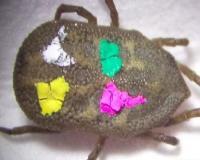
learn more ...
Dispersal is a key characteristic to quantify in order to predict the origins and dynamics of biodiversity. It requires both the physical movement of individuals (functional dispersal), followed by successful reproduction (effective dispersal). Quantifying functional dispersal can be particularly important for understanding disease epidemiology as transmission does not require effective dispersal of the host. Here, we combine capture-mark-recapture and population genetic methodologies to estimate life-stage specific movements of a nest-based parasite and disease vector, the soft tick Ornithodoros maritimus, a common parasite of Mediterranean and North Atlantic seabird colonies. Using these tools, we can estimate functional and effective dispersal of this ectoparasite at the within colony scale and relate it to data on the presence and structure of tick-borne infective agents to evaluate the role of tick demographics in pathogen circulation.
Funded by : Labex CEMEB.
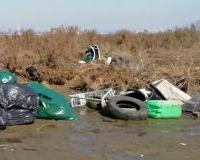
learn more ...
Plastic pollution is an increasing problem for human, wildlife and ecosystem health. However, evaluating the exposition and accumulation of plastics remains difficult in individual organisms, and its long-term consequences for animal population dynamics likely depends on the presence and interaction with other stressors in the local environment, such as infection by parasites and pathogens. In this project, we propose to determine how microplastics, in combination with circulating parasites and pathogens, affect the health and population dynamics of Mediterranean common yellow-legged gulls (Larus michahellis) and assess how this may then feedback to alter human disease risk. Through the integration of biological (parasitology, population ecology) and environmental sciences (ecotoxicology, chemistry), we will thus examine the complex link between terrestrial and marine ecosystems and the etiological agents responsible for wildlife and human disease.. Funded by: Ecologie de la santé - AAP 2020 Mission pour les initiatives transverses et interdisciplinaires (MITI), CNRS Collaborators: Alexandra ter Halle (IMRCP, Toulouse), Jennifier Provencher (ECCC Canada), Marion Vittecoq (Tour du Valat), Thomas Blanchon (Tour du Valat)
Read more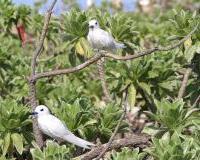
learn more ...
The islands of the western Indian Ocean, and in particular the Scattered Islands, are characterized by heterogeneous host and vector communities, and have been subject to significant modifications over time in relation to human activities and conservation management. For parasites, these changes may favour "host changes", or "spill-overs" and subsequent parasites adaptation. The objective of the SPILE project is to test how the composition of host and vector communities affect the diversity and transmission dynamics of infectious agents. We study these aspects at different spatial (within and among islands) and temporal scales. In addition to its fundamental results, this project addresses the issue of biosecurity in tropical island environments, and the prevention of associated risks for animal and human populations.
Funded by: Consortium "Iles Eparses"
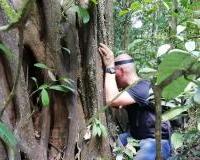
learn more ...
Traditional considerations of disease dynamics have been largely limited to one host-one parasite systems. However, we now recognize that pathogens commonly interact with a diversity of hosts (including humans, domestic/commensal/wild animals and arthropod vectors) and resident micro-organisms, all of which can influence the transmission dynamics of infectious disease. Indeed, we have recently shown that ticks cannot digest blood meals, and thus transmit infectious agents, without the presence of intracellular bacterial symbionts. Likewise, many vectors are considered host generalists (i.e. feeding on a range of host types) when modeling pathogen circulation. However, patterns of host use frequently diverge from that expected based on host availability, greatly modifying the quality of predictions on vector-borne disease dynamics. These biological traits, micro-organisms and host use, can be linked as vector microbial communities (including pathogens) depend on and can constrain host use. However, to date, little consideration has been given to the epidemiological importance of this link. The GUYAVEC project aims to fill this void by evaluating the impact of vector evolutionary ecology on the circulation of infectious diseases in French Guiana. In particular, we will focus on two mechanisms that can alter disease dynamics, 1) structure of the vector microbiome and the nature of interactions within this microbial community, and 2) host specialization in vectors, its link with the microbial community and its impact on transmission pathways.
Funded by: Labex CEBA
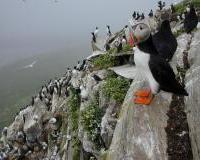
learn more ...
The aim of this project is to better understand how animal populations respond to environmental variability, focusing on the interaction between Arctic seabirds, the tick Ixodes uriae, and the infectious agents it carries, with a particular focus on Lyme disease bacteria that circulate in this system. We study the importance of phenotypic variation in host responses (immunoecology and behaviour) and co-evolutionary processes between the tick vector and its hosts for the dynamics and evolution of the interaction. The detailed long-term data we have collected over 20 years enables us to address two questions of particular interest for populations living at high latitudes: (1) how are populations responding to current rapid environmental changes at different spatial scales, and (2) how do these changes alter the circulation dynamics of infectious agents.
RECENT PUBLICATIONS Click here for the full list

Abstract Babesia sp. YLG has recently been described in Yellow-legged gull (Larus michahellis) chicks and belongs to the Peircei clade in the new classification of Piroplasms. Here, we studied Babesia sp. YLG vectorial transmission by ticks in the simplified environment of a single seabird breeding colony where the Yellow-legged gull is the sole vertebrate host, Ornithodoros maritimus (syn. Alectorobius maritimus) the sole tick species, and Babesia sp. YLG is the only blood parasite species detected in chicks of the colony. We collected ticks over four years, maintained certain individuals through moulting or oviposition, and dissected fresh ticks to isolate different organs and test for the presence of the parasite using molecular assays. We report the first strong evidence of a Piroplasmidae transmitted by a soft tick. Indeed, Babesia sp. YLG DNA was detected in the salivary glands of nymphs, females and males, a necessary organ to infect for transmission to a new vertebrate host. Parasite DNA was also found in tick ovaries, which could indicate possible transovarial transmission. Our detection of Babesia sp. YLG DNA in several male testes and in endospermatophores, and notably in a parasite-free female (uninfected ovaries and salivary glands), raise the interesting possibility of sexual transmission from infected males to uninfected females. Future work in this system will now need to focus on the degree to which the parasite can be maintained locally by ticks and the epidemiological consequences of infection for both O. maritimus and its avian host.
Read more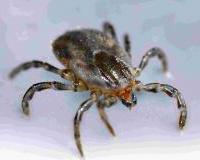
AbstractBorrelia burgdorferi sensu lato is a species complex of spirochetal bacteria that occupy different ecological niches which is reflected in their reservoir host- and vector-associations. Borrelia genomes possess numerous linear and circular plasmids. Proteins encoded by plasmid genes play a major role in host- and vector-interaction and are important for Borrelia niche adaptation. However, the plasmid composition and therewith the gene repertoire may vary even in strains of a single species. Borrelia garinii, one of the six human pathogenic species, is common in Europe (vector Ixodes ricinus), Asia (vector Ixodes persulcatus) and in marine birds (vector Ixodes uriae). For the latter, only a single culture isolate (Far04) and its genome were previously available. The genome was rather small containing only one circular and six linear plasmids with a notable absence of cp32 plasmids. To further investigate B. garinii from marine transmission cycles and to explore i) whether the small number of plasmids found in isolate Far04 is a common feature in B. garinii from marine birds and presents an adaptation to this particular niche and ii) whether there may be a correlation between genome type and host species, we initiated in vitro cultures from live I. uriae collected in 2017 and 2018 from marine avian hosts and their nests. Hosts included common guillemots, Atlantic Puffin, razorbill, and kittiwake. We obtained 17 novel isolates of which 10 were sequenced using Illumina technology, one also with Pacific Bioscience technology. The 10 genomes segregated into five different genome types defined by plasmid types (based on PFam32 loci). We show that the genomes of seabird associated B. garinii contain fewer plasmids (6–9) than B. garinii from terrestrial avian species (generally ≥10), potentially suggesting niche adaptation. However, genome type did not match an association with the diverse avian seabird hosts investigated but matched the clonal complex they originated from, perhaps reflecting the isolates evolutionary history. Questions that should be addressed in future studies are (i) how is plasmid diversity related to host- and/or vector adaptation; (ii) do the different seabird species differ in reservoir host competence, and (iii) can the genome types found in seabirds use terrestrial birds as reservoir hosts.
Read more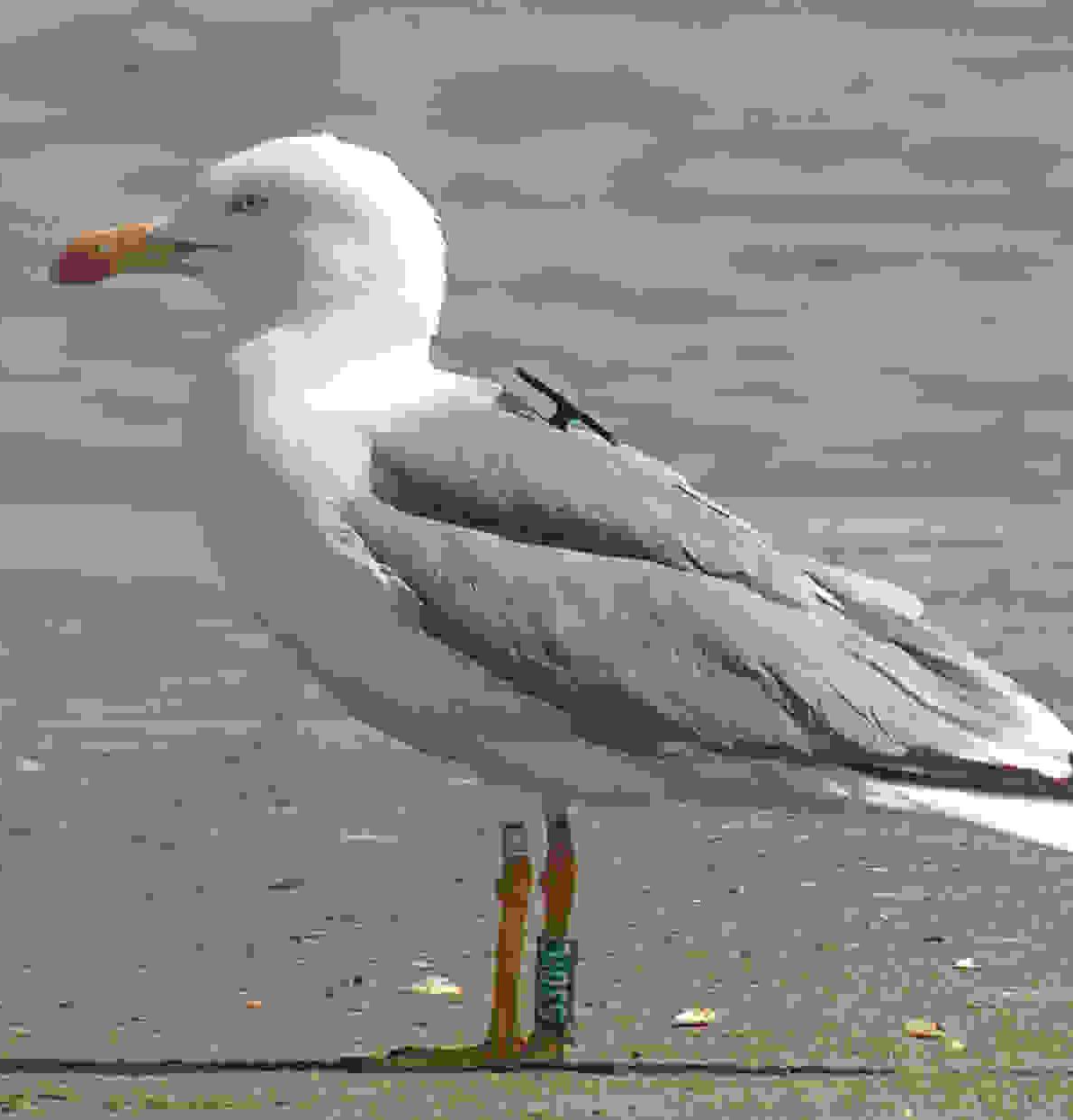
Background As for other life history traits, variation occurs in movement patterns with important impacts on population demography and community interactions. Individuals can show variation in the extent of seasonal movement (or migration) or can change migratory routes among years. Internal factors, such as age or body condition, may strongly influence changes in movement patterns. Indeed, young individuals often tend to move across larger spatial scales compared to adults, but relatively few studies have investigated the proximate and ultimate factors driving such variation. This is particularly the case for seabirds in which the sub-adult period is long and difficult to follow. Here, we examine migration variation and the factors that affect it in a common Mediterranean seabird, the Yellow-legged gull (Larus michahellis). Methods The data include the encounter histories of 5158 birds marked as fledglings between 1999 and 2004 at 14 different colonies in southern France and resighted over 10 years. Using a multi-event mark-recapture modeling framework, we use these data to estimate the probability of movement and survival, taking into account recapture heterogeneity and age. Results In accordance with previous studies, we find that young individuals have greater mobility than older individuals. However, the spatial extent of juvenile movements depends on natal colony location, with a strong difference in the proportion of sedentary individuals among colonies less than 50 km apart. Colony quality or local population dynamics may explain these differences. Indeed, young birds from colonies with strong juvenile survival probabilities (~ 0.75) appear to be more sedentary than those from colonies with low survival probabilities (~ 0.36). Conclusions This study shows the importance of studying individuals of different ages and from different colonies when trying to understand seabird movement strategies. Local breeding success and the availability of food resources may explain part of the among colony differences we observe and require explicit testing. We discuss our results with respect to the feedback loop that may occur between breeding success and mobility, and its potential implications for population demography and the dissemination of avian disease at different spatial scales.
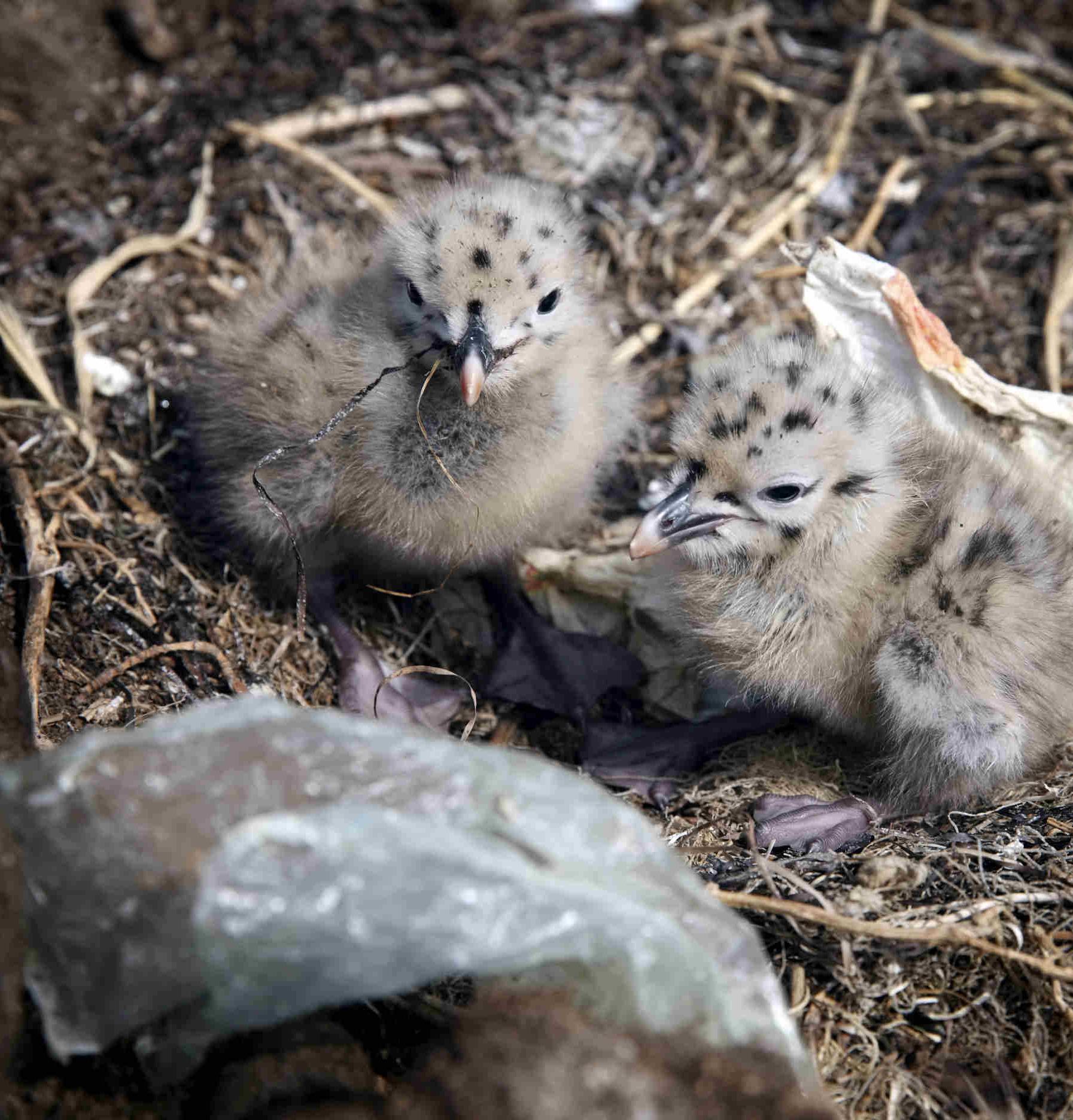
Gulls can be particularly vulnerable to ingesting plastics when using anthropogenic food sources, with potential consequences for survival and reproductive success. Although birds are known to switch foraging habitats over the breeding season to provide higher quality food for chick provisioning, it is unclear what this means regarding the ingestion of plastics. Here, we tested whether breeding gulls decrease the amount of plastic ingested during reproduction by collecting pellets from a series of monitored nests at a large yellow-legged gull (Larus michahellis) colony in southern France. We found at least one plastic item in 83.9 % of the analyzed pellets, with the most abundant plastic type being polyethylene-based sheet plastic. As predicted, we found a slight decrease in the number of plastic items in pellets at chick hatching. These results suggest that gulls, like other birds, may adjust foraging habits to provide more digestible, less risky, food to chicks..

Avian infecting piroplasms are largely under-studied compared to other hemoparasites, and this paucity of information has blurred our phylogenetic and biological comprehension of this important group as a whole. In the present study, we detected and characterized Babesia from yellow-legged gull (Larus michahellis) chicks from a colony in southern France. Based on morphological and molecular characterizations, a new Babesia species belonging to the Peircei group, a clade of avian-specific piroplasms, was identified. Due to the complexity of species delineations and the low number of parasites characterized in this clade to date, a species name was not yet attributed; we refer to it for now as Babesia sp. YLG (Yellow-Legged Gull). High prevalence (85% and 58% in 2019 and 2020, respectively) and high parasitemia (up to 20% of parasitized erythrocytes) were recorded in chicks, without any obvious clinical signs of infection. Although the 16 isolates examined had identical 18S rRNA gene sequences, six genetic variants were described based on partial cox1 sequencing, with evidence of chicks co-infected by two variants. Transmission of Babesia sp. YLG via the soft tick Ornithodoros maritimus is discussed.

The genus Borrelia consists of evolutionarily and genetically diverse bacterial species that cause a variety of diseases in humans and domestic animals. These vector-borne spirochetes can be classified into two major evolutionary groups, the Lyme borreliosis clade and the relapsing fever clade, both of which have complex transmission cycles during which they interact with multiple host species and arthropod vectors. Molecular, ecological, and evolutionary studies have each provided significant contributions towards our understanding of the natural history, biology and evolutionary genetics of Borrelia species; however, integration of these studies is required to identify the evolutionary causes and consequences of the genetic variation within and among Borrelia species. For example, molecular and genetic studies have identified the adaptations that maximize fitness components throughout the Borrelia lifecycle and enhance transmission efficacy but provide limited insights into the evolutionary pressures that have produced them. Ecological studies can identify interactions between Borrelia species and the vertebrate hosts and arthropod vectors they encounter and the resulting impact on the geographic distribution and abundance of spirochetes but not the genetic or molecular basis underlying these interactions. In this chapter we discuss recent findings on the evolutionary genetics from both of the evolutionarily distinct clades of Borrelia species. We focus on connecting molecular interactions to the ecological processes that have driven the evolution and diversification of Borrelia species in order to understand the current distribution of genetic and molecular variation within and between Borrelia species.

Characterising within-host microbial interactions is essential to understand the drivers that shape these interactions and their consequences for host ecology and evolution. Here, we examined the bacterial microbiota hosted by the seabird soft tick Ornithodoros maritimus (Argasidae) in order to uncover bacterial interactions within ticks and how these interactions change over tick development. Bacterial communities were characterised through next-generation sequencing of the V3–V4 hypervariable region of the bacterial 16S ribosomal RNA gene. Bacterial co-occurrence and co-exclusion were determined by analysing networks generated from the metagenomic data obtained at each life stage. Overall, the microbiota of O. maritimus was dominated by four bacterial genera, namely Coxiella, Rickettsia, Brevibacterium and Arsenophonus, representing almost 60% of the reads. Bacterial diversity increased over tick development, and adult male ticks showed higher diversity than did adult female ticks. Bacterial networks showed that co-occurrence was more frequent than co-exclusion and highlighted substantial shifts across tick life stages; interaction networks changed from one stage to the next with a steady increase in the number of interactions through development. Although many bacterial interactions appeared unstable across life stages, some were maintained throughout development and were found in both sexes, such as Coxiella and Arsenophonus. Our data support the existence of a few stable interactions in O. maritimus ticks, on top of which bacterial taxa accumulate from hosts and/or the environment during development. We propose that stable associations delineate core microbial interactions, which are likely to be responsible for key biological functions.
Read more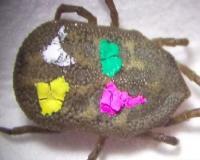
Functional dispersal (between-site movement, with or without subsequent reproduction) is a key trait acting on the ecological and evolutionary trajectories of a species, with potential cascading effects on other members of the local community. It is often difficult to quantify, and particularly so for small organisms such as parasites. Understanding this life history trait can help us identify the drivers of population dynamics and, in the case of vectors, the circulation of associated infectious agents. In the present study, functional dispersal of the soft tick Ornithodoros maritimus was studied at small scale, within a colony of yellow-legged-gulls (Larus michahellis). Previous work showed a random distribution of infectious agents in this tick at the within-colony scale, suggesting frequent tick movement among nests. This observation contrasts with the presumed strong endophilic nature described for this tick group. By combining an experimental field study, where both nest success and tick origin were manipulated, with Capture-Mark-Recapture modeling, dispersal rates between nests were estimated taking into account both tick capture probability and survival, and considering an effect of tick sex. As expected, tick survival probability was higher in successful nests, where hosts were readily available for the blood meal, than in unsuccessful nests, but capture probability was lower. Dispersal was low overall, regardless of nest state or tick sex, and there was no evidence for tick homing behavior; ticks from foreign nests did not disperse more than ticks in their nest of origin. These results confirm the strong endophilic nature of this tick species, highlighting the importance of life cycle plasticity for adjusting to changes in host availability. However, results also raise questions with respect to the previously described within-colony distribution of infectious agents in ticks, suggesting that tick dispersal either occurs over longer temporal scales and/or that transient host movements outside the breeding period result in vector exposure to a diverse range of infectious agents.
Read more-1.jpg)
In Europe, ticks are major vectors of both human and livestock pathogens (e.g. Lyme disease, granulocytic anaplasmosis, bovine babesiosis). Agricultural landscapes, where animal breeding is a major activity, constitute a mosaic of habitat types of various quality for tick survival and are used at different frequencies by wild and domestic hosts across seasons. This habitat heterogeneity, in time and space, conditions the dynamics of these host-vector-pathogen systems and thus drives acarological risk (defined as the density of infected ticks). The principal objective of the OSCAR project (2011-2016) was to examine the links between this heterogeneity and acarological risk for humans and their domestic animals. Here, we present the data associated with this project.
Read more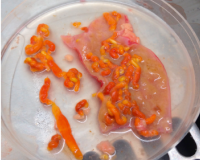
Parasites are ubiquitous in the environment, and can cause negative effects in their host species. Importantly, seabirds can be long-lived and cross multiple continents within a single annual cycle, thus their exposure to parasites may be greater than other taxa. With changing climatic conditions expected to influence parasite distribution and abundance, understanding current level of infection, transmission pathways and population-level impacts are integral aspects for predicting ecosystem changes, and how climate change will affect seabird species. In particular, a range of micro- and macro-parasites can affect seabird species, including ticks, mites, helminths, viruses and bacteria in gulls, terns, skimmers, skuas, auks and selected phalaropes (Charadriiformes), tropicbirds (Phaethontiformes), penguins (Sphenisciformes), tubenoses (Procellariiformes), cormorants, frigatebirds, boobies, gannets (Suliformes), and pelicans (Pelecaniformes) and marine seaducks and loons (Anseriformes and Gaviiformes). We found that the seabird orders of Charadriiformes and Procellariiformes were most represented in the parasite-seabird literature. While negative effects were reported in seabirds associated with all the parasite groups, most effects have been studied in adults with less information known about how parasites may affect chicks and fledglings. We found studies most often reported on negative effects in seabird hosts during the breeding season, although this is also the time when most seabird research occurs. Many studies report that external factors such as condition of the host, pollution, and environmental conditions can influence the effects of parasites, thus cumulative effects likely play a large role in how parasites influence seabirds at both the individual and population level. With an increased understanding of parasite-host dynamics it is clear that major environmental changes, often those associated with human activities, can directly or indirectly affect the distribution, abundance, or virulence of parasites and pathogens..
Read more-r-195x130-(1)-1.png)
Diseases transmitted by hard ticks (subphylum Chelicerata; subclass Acari; family Ixodidae) have substantial impacts on public health and are on the rise globally due to human population growth and change in geographic ranges of tick vectors. Members of the Ixodes genus impact human and animal health directly via host parasitism, and indirectly via transmission of multiple viral, bacterial and protozoan diseases. The first tick genome assembly was completed in 2016 for Ixodes scapularis (blacklegged tick), the North American vector of Lyme disease (LD), human babesiosis, human anaplasmosis and Powassan virus. The assembly provided insight into the genome biology of hard (ixodid) ticks and supported molecular studies for many species of Acari (ticks and mites). Draft genome assemblies are available for Ixodes ricinus and Rhipicephalus (Boophilus) microplus (southern cattle tick). However, high quality reference assemblies to rival those produced for the mosquito vectors Anopheles gambiae and Aedes aegypti, have not been produced for a tick vector. The Ixodes 1000 genomes project (Ix1000G) outlines a “hub and spoke” model to sequence both laboratory reference strains and natural populations of Ixodes. The project is aligned with other ambitious genome initiatives such as the i5K effort that proposes to sequence 5000 arthropod species (Evans et al., 2013) and the Earth BioGenomes project, a moonshot to sequence and catalog all of Earth’s biodiversity (Lewin et al., 2018). The Ixodes 1000 Genomes Consortium (IGC) represents an international scientific collaboration formed to launch and guide the initiative. This Letter to the Editor defines the strategic vision of the Ix1000G and serves as a call to the broader scientific community for engagement.
Read more
Hard ticks are widely distributed across temperate regions, show strong variation in host associations, and are potential vectors of a diversity of medically important zoonoses, such as Lyme disease. To address unresolved issues with respect to the evolutionary relationships among certain species or genera, we produced novel RNA-Seq data sets for nine different Ixodes species. We combined this new data with 18 data sets obtained from public databases, both for Ixodes and non-Ixodes hard tick species, using soft ticks as an outgroup. We assembled transcriptomes (for 27 species in total), predicted coding sequences and identified single copy orthologues (SCO). Using Maximum-likelihood and Bayesian frameworks, we reconstructed a hard tick phylogeny for the nuclear genome. We also obtained a mitochondrial DNA-based phylogeny using published genome sequences and mitochondrial sequences derived from the new transcriptomes. Our results confirm previous studies showing that the Ixodes genus is monophyletic and clarify the relationships among Ixodes sub-genera. This work provides a baseline for studying the evolutionary history of ticks: we indeed found an unexpected acceleration of substitutions for mitochondrial sequences of Prostriata, and for nuclear and mitochondrial genes of two species of Rhipicephalus, which we relate with patterns of genome architecture and changes of life-cycle, respectively.
Read moreNEWS

Bad news: the next GRC/GRS on the Movement Ecology of Animals has now been postponed until 2023 due to COVID19 restrictions. The tentative new date is May-June 2023, so keep the date open !
more ...

The scientific program for the next GRC/GRS on the Movement Ecology of Animals is now available. Don't wait to register!
more ...
GRC Movement Ecology of Animals: Proximate and Ultimate Drivers of Animal Movement.
Chair: Karen D. McCoy (CNRS, France)
Vice-Chair: Francesca Cagnacci (Fondazione Edmund Mach, Italy)
GRS Movement Ecology of Animals: Proximate and Ultimate Drivers of Animal Movement.
Co-chairs: Briana Abrahms (University of Washington, USA) and Simona Picardi (Utah State University)
Research in the young and exciting scientific field of “Movement Ecology” has already led to major insights in our understanding of ecological and evolutionary processes, from ecosystem function, to individual and social behaviours, population dynamics, community ecology and conservation. Technological advances in animal biologging, paralleled by data storage and sharing initiatives, have opened the “big data” era for animal movement. In parallel, a myriad of analytical tools and code packages are being developed to process these large datasets to address broad-scale and overarching questions in ecology, evolution, and behaviour. However, to keep on par with these methodological advances, we now need to solidify the theoretical basis of movement to better understand the causes of animal movement, and its consequences at different spatio-temporal scales. What are the proximate and ultimate drivers of movement, how do these drivers function and can we make some general rules that apply across living organisms? This Gordon Research Conference will address these aspects of movement ecology by focusing on the evolution of movement and dispersal and the processes that shape these traits. It will also explicitly examine the ecological and evolutionary consequences of movement – from individual fitness to community dynamics, from disease epidemiology to conservation – in order to link our fundamental advances to current applied questions related to the dynamics of animal populations in a rapidly changing world and to the challenging future scenarios that lie ahead. Building off past meetings, the planned sessions for the 2021 conference will fall into three main themes: the evolution of animal movement (including its fundamental basis and underlying variability), the proximate processes that define movement decisions, and the ecological and evolutionary consequences of movement, with explicit consideration of the general patterns that emerge across systems and how these patterns match on-going and future changes in natural systems.
Where and when ?
Lucca (Barga), Italy
GRS May 29-30th, 2021
GRCMay 30 - June 4th 2021,
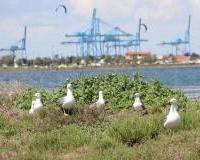
ANR funding was awarded for the EcoDIS project !
more ...
EcoDIS: Disease ecology in a modified world: Linking combined environmental stressors, population dynamics and movement ecology to understand the circulation of infectious agents.
Summary: Environmental pollutants and pathogens can have negative impacts on wildlife health and population dynamics. While their effects are often sub-lethal or weak individually, little is known about their cumulative and interactive effects when experienced together. EcoDIS will address this issue via an interdisciplinary approach that combines demographic monitoring, ecotoxicology, population genetics, epidemiology, and movement ecology, to study how levels of pollutants (TE & plastics) and parasites in the Yellow-legged gull (Larus michahellis) alter their reproductive success, population dynamics and movement patterns, and subsequently modify the circulation of infectious agents at different spatial scales. By using a widespread wildlife species frequently found in urban areas, results will be of both significant fundamental (i.e., effects of environmental stressors on wildlife population dynamics) and applied interest (i.e., pathogen circulation by wildlife and human exposure risk).
Partners: LIENSs UMR 7266 CNRS- Univ LaRochelle; CEFE UMR 5175 CNRS UMontpellier; IMRCP UMR 5623 Toulouse; Tour du Valat; University of Barcelona; Environnement et Changement Climatique Canada
Funding period: February 2021 - January 2025
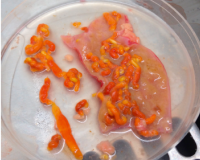
Florence DROGUET has joined the team to start her PhD on the CIPPE project ! Welcome Florence!
more ...
Florence will study the relationship between parasite load and seabird fitness in environments with different types and degrees of environmental pollution.
Read more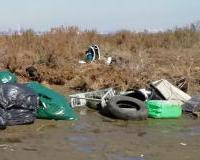
more ...
The CIPPE project has been financed by the CNRS MITI call for proposals on Disease Ecology...see above for more details.
Read morePHOTO GALLERY
Montpellier
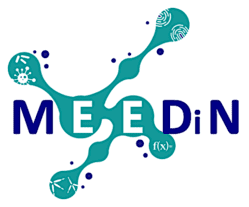
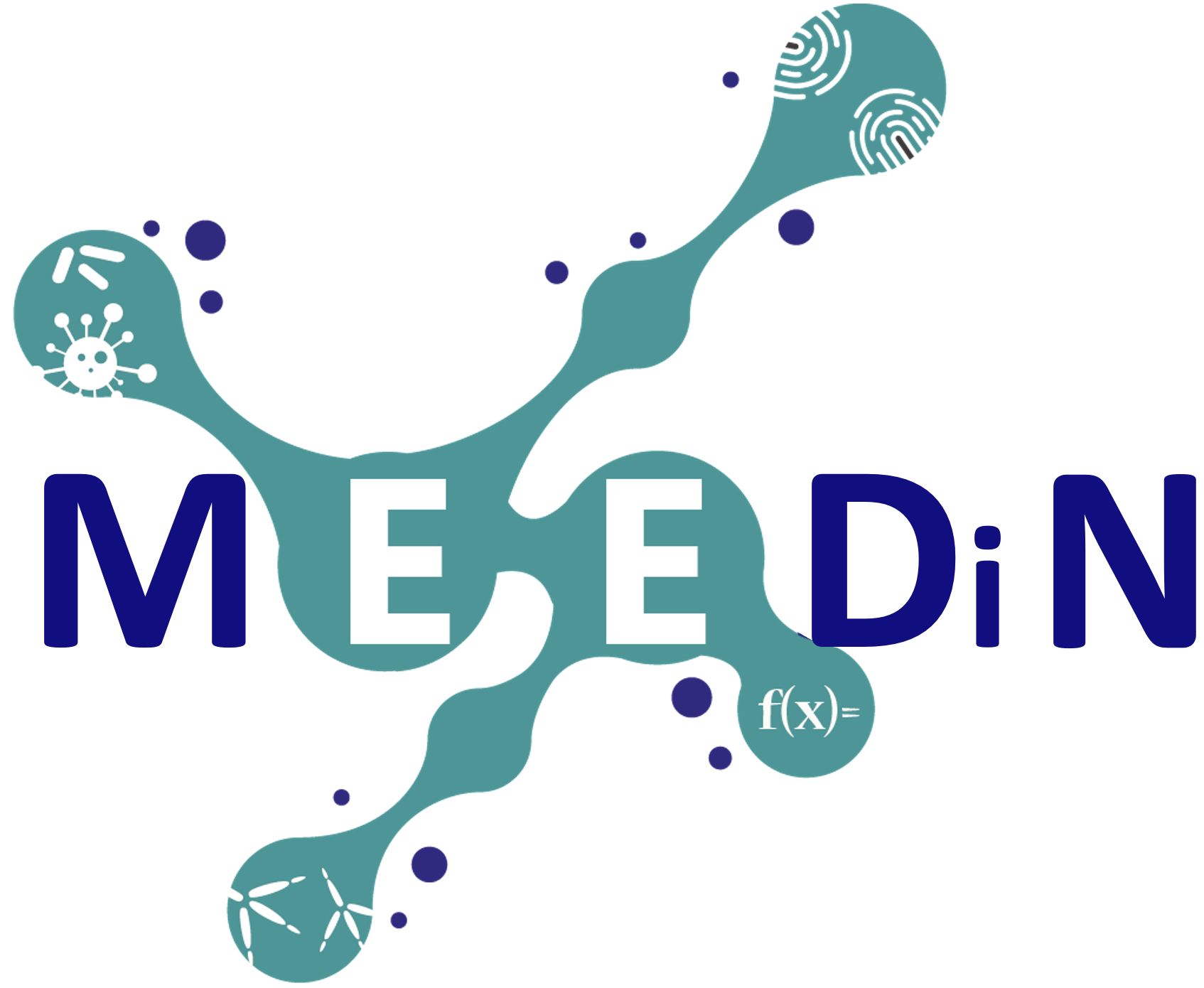

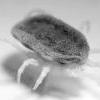

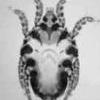
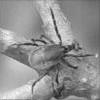

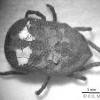
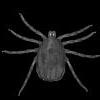
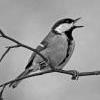
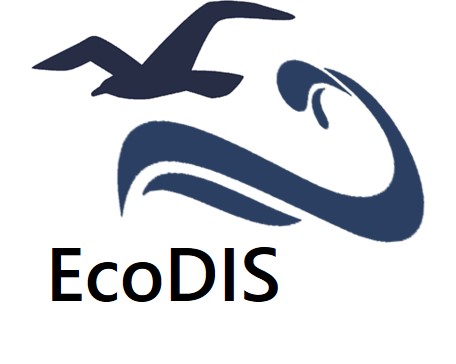
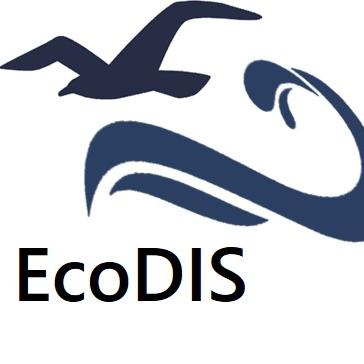

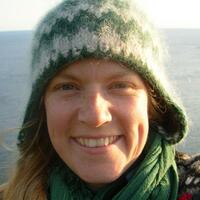
-1.jpg)
-1.jpg)
-1.jpg)
-1.jpg)
-1.jpg)
-(1)-(1)-1.jpg)